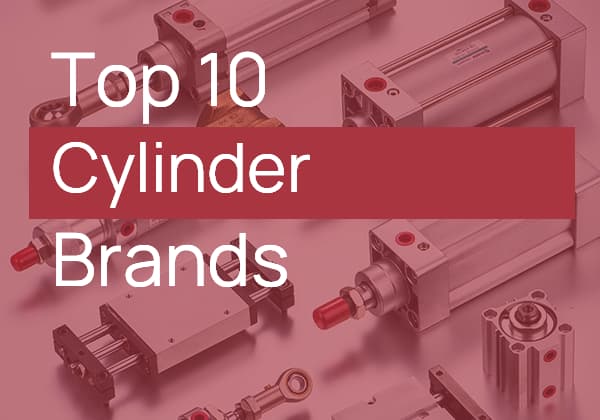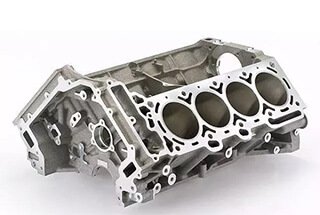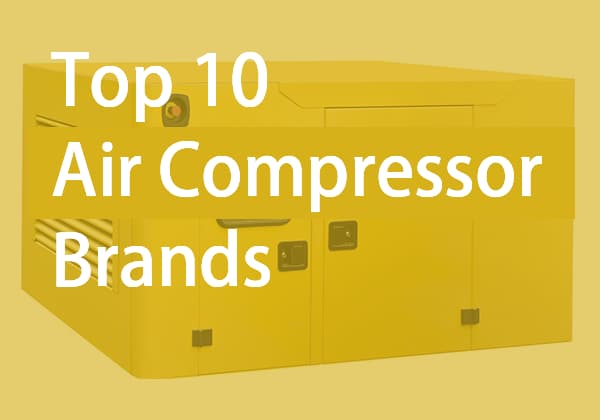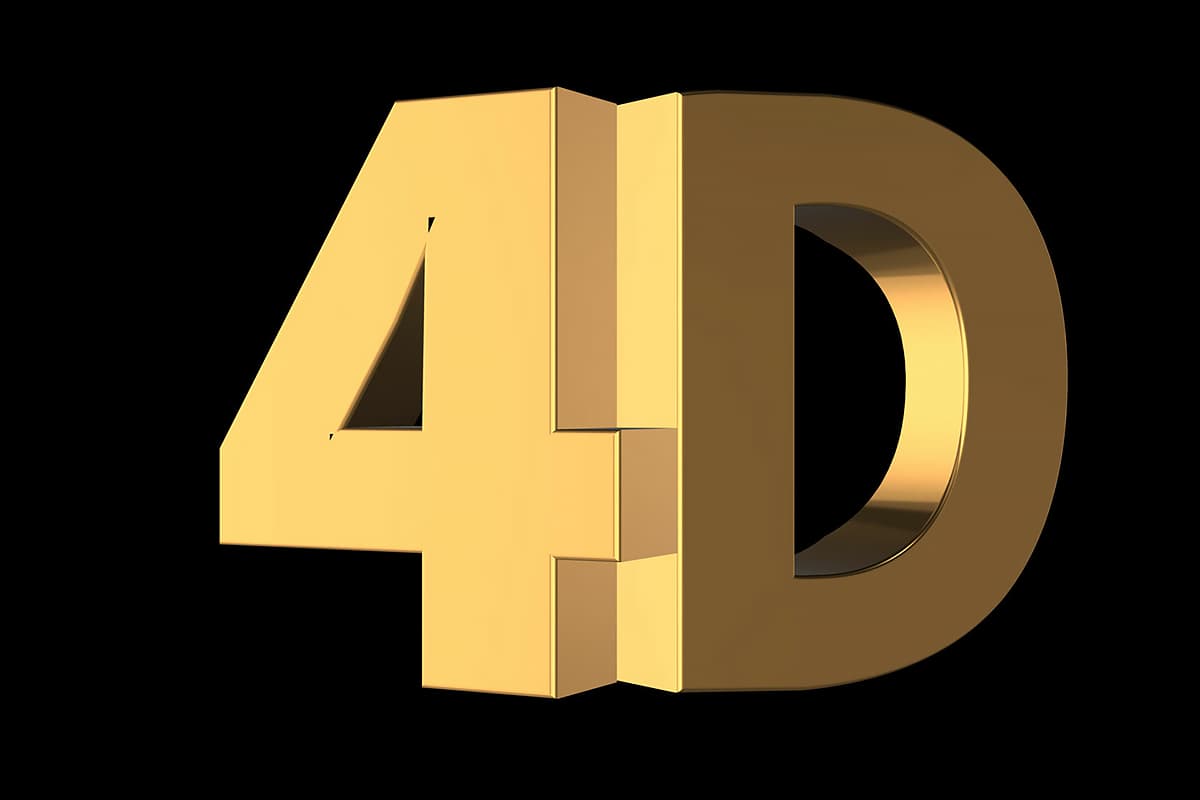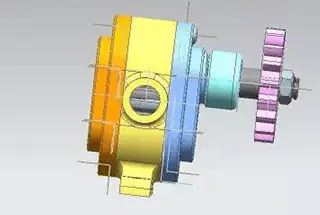
Have you ever wondered how power is transmitted in various machines and devices? From the engines that propel our vehicles to the motors that drive our industries, power transmission is a crucial aspect of mechanical engineering. In this blog post, we’ll explore the fascinating world of power transmission, delving into the different types of systems and their unique characteristics. Join us as we unravel the mysteries behind the smooth operation of the machines that shape our modern world. Get ready to discover the advantages and disadvantages of each power transmission method and gain insights from industry experts.
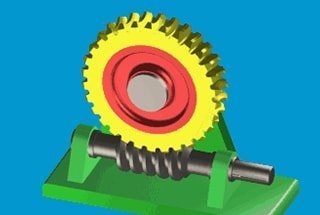
Power transmission types primarily include direct drive, gear transmission, chain drive, and synchronous belt drive. These methods are widely used in various application scenarios. For instance, in an automotive power transmission system, the power generated by the engine is transferred to the drive wheels through components such as the clutch, transmission, universal joint, and drive shaft, facilitating vehicle movement.
Moreover, all-electric vehicles powered by renewable energy employ a direct drive mechanism where the motor directly powers the wheels, converting electrical energy into power. This method is characterized by its efficiency and speed.
Wireless power transmission is a unique type of power transmission method. It uses radio waves to send power from a power plant to a specific receiving device, converting it into electricity for use. Although this method is primarily used in specific scenarios, like wireless charging, it demonstrates the diversity and innovation of power transmission technology.
In the aviation field, the power transmission system is a crucial component of aircraft engine design. The technical features and application research of this system are vitally important for enhancing the performance of aircraft engines.
| Type of Power Transmission | Description | Advantages | Disadvantages |
|---|---|---|---|
| Mechanical Transmission | Utilizes mechanical parts like couplings, chains, sprockets, belts, and pulleys. Includes gear, worm gear, belt, chain, and gear train transmission. | Accurate and efficient, ideal for short-distance transmission, high reliability, and long service life. | High manufacturing and installation costs, not suitable for long-distance transmission, no overload protection. |
| Electric Drive | Uses electric motors to convert electrical energy into mechanical energy for machinery and vehicles. | High precision, energy-saving, precise control, environmentally friendly, reduced noise, and cost-saving. | – |
| Pneumatic Transmission | Employs compressed gas to transmit power or information, suitable for harsh environments. | Quick action, fast response, low maintenance, clean medium, cost-effective, automatic overload protection. | Affected by air compressibility, low working pressure, significant noise during high-speed exhaust, slower than electronic signals. |
| Hydraulic Transmission | Uses liquid as a medium to transmit energy and control. | Compact, allows for stepless adjustments, fast response, easy integration with electrical control, safe, and reliable. | Potential oil leaks, not completely incompressible, losses during oil flow, difficulties under extreme temperatures, requires high precision in manufacturing. |
The table above summarizes the key aspects of each type of power transmission, highlighting their main characteristics, benefits, and limitations.
(1) What is mechanical power transmission?
Mechanical power transmission refers to products used for the movement of mechanical parts, not for electrical power supply. These products include couplings, chains and sprockets, belts and pulleys, and drive components.
The mechanical transmission system is a crucial part of the machine tool. It is mainly driven by a ball screw, which is integrated with the moving shaft during the transmission process.
The machine tool is powered by a motor. The purpose of the mechanical transmission is to transmit motion and force.
Commonly used mechanical transmission types include gear transmission, worm gear transmission, belt transmission, chain transmission, and gear train.
The role of mechanical transmission is to transmit both motion and force.
(2) Types of mechanical power transmission
The most common mechanical power transmission mainly includes: gear drive, turbo vortex drive, belt drive, chain drive, gear train etc.
01. Gear Drive

Gear transmission is the most commonly used type of transmission in mechanical transmission.
It offers accurate, efficient, compact, reliable, and long-lasting transmission.
There are several different types of gear drives that are classified based on various standards.
Advantages:
Disadvantages:
02. Turbo Vortex Drive
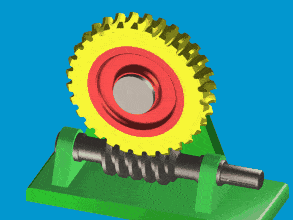
Suitable for motion and power between two axes with vertical and non-intersecting spaces.
Advantages:
Disadvantages:
The main parameters of the turbine drive are:
03. Belt Drive
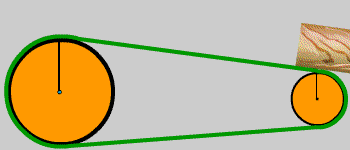
A belt drive is a mechanical transmission system that uses a flexible belt, tensioned on pulleys, to transmit motion or power.
The belt drive typically consists of a driving wheel, a driven wheel, and an endless belt that is tensioned between the two wheels.
1) When the direction of rotation of two axes is parallel, it is referred to as the open motion, center distance, and wrap angle concept.
2) Belts can be divided into three categories based on their cross-sectional shape: flat belt, V-belt, and special belt.
3) The focus of its applications includes:
Pros and cons of belt driving:
Advantages:
Disadvantages:
04. Chain Drive
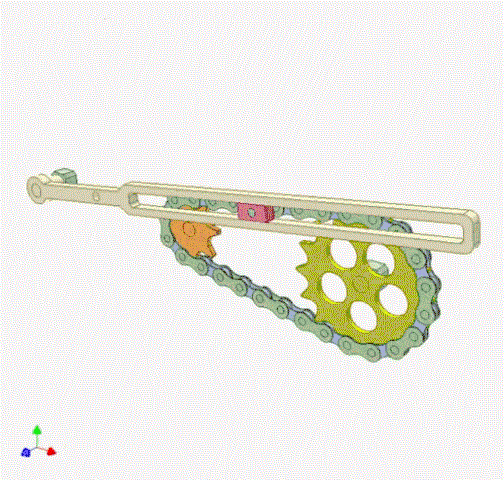
The chain drive is a mechanical transmission system that transmits motion and power from a drive sprocket with a specialized tooth shape to a driven sprocket with a similar tooth shape via a chain.
Including:
Advantages:
Chain drives have many advantages, compared to belt drives,
Compared with gear transmission, chain drive featured:
Disadvantages:
The main disadvantages of the chain drive are:
05. Gear Train
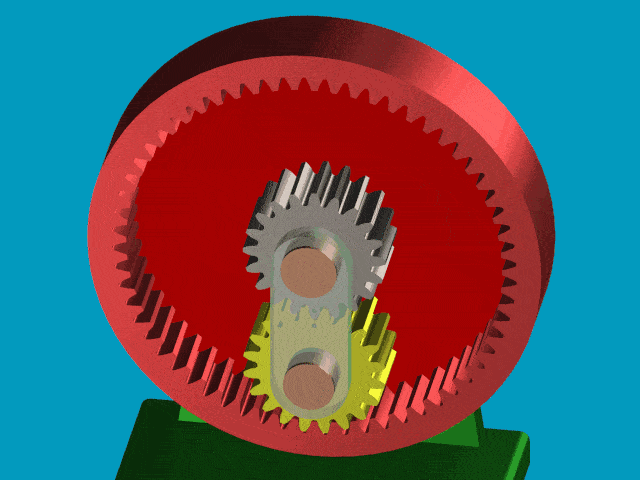
A transmission system that comprises more than two gears is referred to as a gear train. The gear transmission can be classified into two types: ordinary gear transmission and planetary gear transmission.
A planetary gear is a gear that undergoes both rotational and axial movement within the gear train.
The gear train can be divided into two categories: fixed axle train and epicyclic train.
The gear ratio of the train, which is the ratio of the angular velocity (or rotational speed) of the input shaft to the output shaft, is calculated by dividing the product of the number of teeth of all the follower gears in each pair of meshing gears by the number of teeth of all the driving gears.
In an epicyclic gear train, the planetary gear, which undergoes both rotational and axial motion, is contrasted with the center gear or sun gear, which has a fixed axial position.
The gear ratio of the epicyclic gear train cannot be calculated directly and requires the use of the relative motion method (or inversion method) to convert the epicyclic gear train into a hypothetical fixed axle train.
Features of the gear train include:
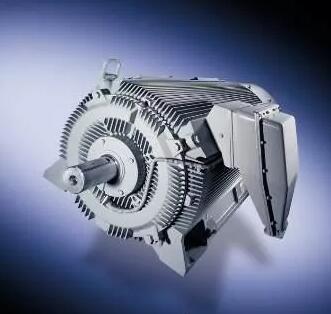
Electric drive refers to the use of electric motors to convert electrical energy into mechanical energy to drive various types of production machinery, transportation vehicles, and other items that require movement in daily life.
Advantages:
High precision: Servo motors are used as power sources, and the simple and efficient transmission mechanism consisting of ball screws and timing belts results in a repeatability error of 0.01%. This transmission method is utilized in press brake machines.
Energy-saving: Energy released during the deceleration phase of the work cycle can be converted back into electrical energy, reducing operating costs, and requiring only 25% of the power equipment required for hydraulic drives.
Precise control: With the support of high-precision sensors, measuring devices, and computer technology, accurate control can be achieved according to set parameters, greatly exceeding the control accuracy of other control methods.
Environmental protection: Lower energy consumption and optimized performance result in reduced pollution and noise, providing better environmental protection for the factory.
Reduced noise: Operating noise is less than 70 decibels, about 2/3 of the noise produced by a hydraulically driven injection molding machine.
Cost-saving: The cost of hydraulic oil and associated maintenance is eliminated, and there is no need for hard or soft pipes, cooling the hydraulic oil, or reducing cooling water costs.
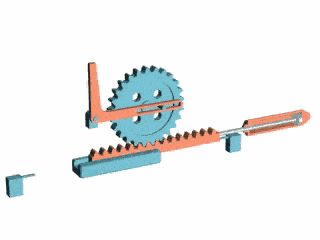
The pneumatic transmission utilizes compressed gas as the working medium and transmits power or information through the pressure of the gas.
Advantages:
Air being the working medium in pneumatic transmission, it is relatively easy to obtain. Used air can be conveniently discharged into the atmosphere, eliminating the need for a recovered fuel tank and pipeline as in hydraulic transmission.
Moreover, the viscosity of air being very low (about one ten-thousandth of hydraulic oil), it results in minimal loss and enables easy concentration of gas supply and long-distance transportation. Leaks in pneumatic systems also do not cause as much environmental pollution as hydraulic drives.
Compared to hydraulic transmission, pneumatic transmission offers quick action, fast response, low maintenance, a clean working medium, and no deterioration of the medium.
Additionally, it has good adaptability to harsh working environments such as flammable, explosive, dusty, strong magnetic, radiation, and vibration conditions, making it superior to hydraulic, electronic and electrical control systems.
Lastly, pneumatic transmission is cost-effective and has the capability of automatic overload protection.
Disadvantages:
The stability of the working speed is affected by the compressibility of air. However, the use of a gas-liquid linkage device provides satisfactory results.
Due to a low working pressure of generally 0.31 MPa and the need to keep the structure size small, the total output force should not exceed 10 to 40 kN.
High-speed exhaust generates significant noise, so a muffler is added to mitigate this.
The transmission speed of gas signals in pneumatic devices is slower than the speed of electrons and light within the sound velocity.
As a result, pneumatic control systems should not be used in complex circuits with numerous stages.
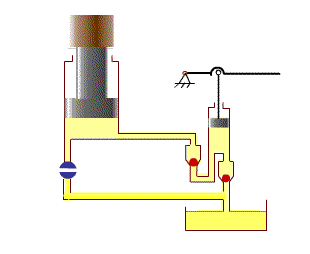
Hydraulic transmission is a method of transmitting energy and control through the use of liquid as a working medium.
Advantages:
From a structural perspective, the four transmission modes have a force-compressed output power per unit weight and size, and a large moment inertia ratio.
However, hydraulic transmission has a smaller volume when transmitting the same power, is lightweight with low inertia, and has a compact structure and flexible layout.
Performance-wise, hydraulic transmission allows for stepless adjustments in speed, torque, and power with a fast response time and a wide speed range of up to 100:1 to 2000:1.
The control and adjustment are relatively simple, making it convenient to operate and labor-saving.
Additionally, it is easy to integrate with electrical control and computer systems for automation.
In terms of use and maintenance, hydraulic components have good self-lubricating properties, are easy to overload-protect and maintain pressure, and are safe and reliable. Components are also easily standardized and generalized.
Hydraulic technology is known for its safety and reliability, and its plasticity and variability provide great flexibility in production, allowing for easy changes and adjustments to the production process.
Furthermore, hydraulic components are relatively inexpensive and widely adaptable.
The combination of hydraulic technology with new technologies such as microcomputer control is becoming the trend in the world, and it constitutes the “machine-electric-hydraulic-light” integration, making digitalization easy to achieve.
Everything has two sides, there are advantages and disadvantages. Hydraulic drives are no exception:
Disadvantages:
The relative movement of surfaces in hydraulic transmission leads to inevitable oil leaks, and the oil is not completely incompressible.
This can result in a lack of strict transmission ratio and make it unsuitable for use in transmission chains for machine tools like threaded gears.
There are losses such as along loss, local loss, and leakage during the flow of oil, leading to low transmission efficiency, making it unsuitable for long-distance transmission.
Hydraulic transmission experiences difficulties under high and low temperature conditions.
To prevent oil leakage and meet performance requirements, hydraulic components need to be manufactured with high precision, which can create difficulties in use and maintenance.
Diagnosing faults in hydraulic systems can be challenging, especially in areas where hydraulic technology is not widely used. This often hinders the wider promotion and application of hydraulic technology.
Maintenance of hydraulic equipment requires a certain level of experience, and the training for hydraulic technicians takes a longer period of time.
The advantages and limitations of gear drive, chain drive, and synchronous belt drive in modern industry are as follows:
The primary advantages of gear drive include: instantaneous transmission ratio that is constant and highly stable, reliable structure, low noise, high power transmission efficiency, wide speed range, ability to achieve a large transmission ratio, compact structure, and long service life. Additionally, gear drive is suitable for transmission where the center distance between the two shafts is large, with good flexibility to cushion impact and absorb vibrations; slipping when overloaded prevents damage to other parts, with a simple structure and low cost.
The limitations of gear drive include: high environmental requirements, good lubrication conditions are necessary, not suitable for transmission between two shafts with a lot of dust or a long distance, and high precision in manufacturing and installation is required.
The advantage of chain drive lies in its systematic analysis and description in its design, including the structure, principle, design calculation, and tensioning aspects of various belt drives (flat belt drive, V-belt drive, narrow V-belt drive, multi-wedge belt drive, synchronous belt drive, etc.).
Synchronous belt drive combines the advantages of chain, gear, and triangle belt, and is gaining attention with the development of the industry. Its features include smooth transmission, high transmission efficiency, and good heat resistance of the product.
Gear drive is widely used in modern industry for its high efficiency, high stability, suitability for large transmission ratios, and long life, but it requires a higher environment and is not suitable for applications with a lot of dust or long distances. The specific pros and cons of chain drive and synchronous belt drive need to be analyzed based on the specific design and application scenario, but they all reflect the modern industry’s demand for efficient and stable transmission methods.


